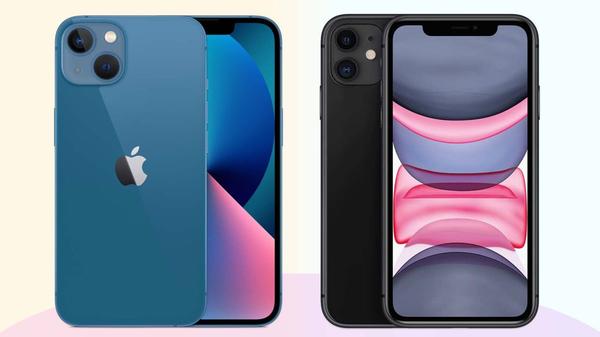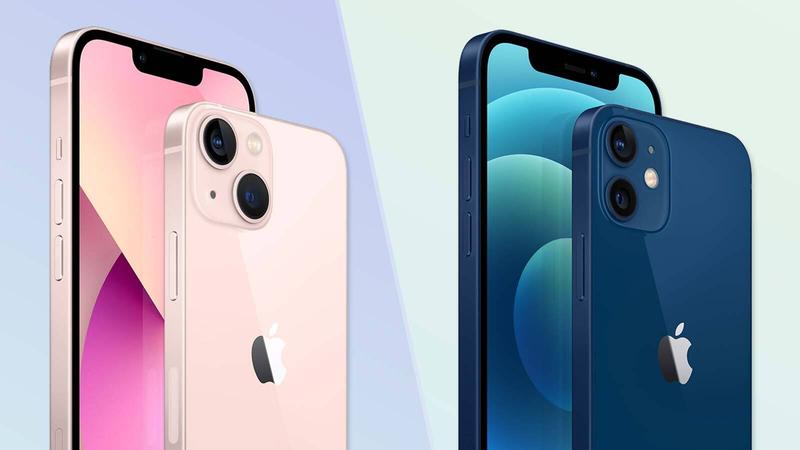
iPhone 13 vs iPhone 12 and iPhone 11: what’s the best value smartphone?
There are four new models in the new iPhone 13 series – and you might well be weighing up whether they’re worth the price of an upgrade.
There’s plenty to like about the new range; the iPhone 13 Mini gives you the perks of the full sized 13 in miniature form. The Pro variations, including the flagship iPhone 13 Pro Max, have four cameras in total and an impressive Apple A15 Bionic chip with 4GB of RAM, but they come with a high price tag to match.
We’ll take a closer look at each to find out if the iPhone 13 is worth the extra money, or if you’re better off saving with an older model.
Or you can head straight to our reviews of the new models:
Check the best contract deals on the iPhone 13 with Which? mobile switch, or read all our mobile phone reviews to see how the new iPhones compare to their rivals.
iPhone 13 vs iPhone 12 vs iPhone 11
Apple has stuck to the same range of phones as with the 12 series. We’ve picked out the standard iPhone 13 to compare with its predecessors in the table below. As you can see, there are a lot of similarities that might suggest you could choose a slightly older series and save.
| iPhone 11 | iPhone 12 | iPhone 13 | |
| Screen size | 6.1 inches | 6.1 inches | 6.1 inches |
| Rear cameras | 2 (12Mp wide and 12Mp ultra-wide lens) | 2 (12Mp wide and 12Mp ultra-wide lens) | 2 (12 Mp wide and 12Mp ultra-wide lens) |
| Front cameras | 1 (12Mp wide lens) | 1 (12Mp wide lens) | 1 (12Mp wide lens) |
| Battery size | 3110mAh | 2815mAh | 3240mAh |
| Internal memory (smallest available) | 64GB | 64GB | 128GB |
There are differences under the hood, though. The screen size and cameras have the same make-up between the iPhone 12 and 13, but the iPhone 12 and 13 have an upgraded OLED screen compared to the iPhone 11’s Super Retina LCD screen. The internal memory options for the iPhone 13 are the biggest at the base price, which may become useful as there’s no slot to add more once you’ve bought it. The battery is bigger in the iPhone 13, which hopefully gives it a welcome boost.

Tech tips you can trust– get our free Tech newsletter for advice, news, deals and stuff the manuals don’t tell you
iPhone 13 series – what’s new?
The main iPhone 13 has small but important improvements over its predecessor, with a brighter display, a bigger battery and some cool new camera features. Though the number and size of the cameras haven’t changed since the 12, there have been changes to the hardware itself. The wide-angle camera has a new sensor which utilises more light and is said to improve the detail of images, especially in low light. Sensor-shift image stabilisation removes the risk of shaky images if your hands are wobbling when taking a picture or video, and you can set up different photographic styles, which are applied automatically to your shots. A new cinematic mode is a real highlight, making your videos look more professional with some snazzy focus effects.
There is a very small design difference on the display; there is a slightly smaller notch for the front camera and the ear speaker is on the top edge of the phone. The screen is brighter than the iPhone 12 screen. The bigger battery is designed to improve battery life, but it does make the iPhone 13 slightly heavier than the iPhone 12.
One advantage iPhones have over the competition is strong security update support. Read our guide to mobile phone security, and use our free support tool to see how long you can expect different models to last.
iPhone 11 series – what are you missing out on?
The biggest savings are likely to come from the iPhone 11 series. It’s not drastically different to the iPhone 12, but small upgrades to the display, battery size and cameras may make the extra cost of a newer iPhone worthwhile. The resolution and brightness is better on the iPhone 12 with an OLED display instead of an LCD display. The ceramic shield display makes the iPhone 12 more durable too. Apple claims that the iPhone 12 is 11% thinner, 15% smaller and 16% lighter than iPhone 11. This will be somewhat noticeable when handling the phone.
The iPhone 12 has a faster A14 Bionic chip but this won’t be a huge advantage for everyday use, and they both have the same storage options. One key consideration is that the iPhone 11 isn’t 5G compatible.
The cameras are similar with the same sized sensor, however, there are some differences when we look at the detail. The iPhone 12 will give you slightly better images in low-light conditions and all pictures will be more balanced and brighter. You also get night mode on both the rear and the front cameras on the 12 and videos will be more dynamic.
Overall, the differences between the iPhone 11 and 12 are small, and like the jump from the 12 to the 13, are largely focused around the improved display and cameras. Read on to find out how much you could save.
iPhone 13 (£779)
Though the improvements from the iPhone 12 and even iPhone 11 are minor on paper, it does have a sharper display, a bigger battery and an even sleeker design. With improved cameras giving you more detailed and brighter images with new settings and modes, you won’t have to make compromises on quality.
iPhone 13 Pro (£949)
The iPhone 13 Pro has a beautiful and bright display with ProMotion technology and a 120Hz refresh rate, giving you a seamless experience. Storage options are bigger than in the iPhone 13 and iPhone 13 Mini up to 1TB, and the battery is larger too.
iPhone 13 Pro Max (£1,049)
The iPhone 13 Pro Max has all the bells and whistles of the Pro, as you’d expect from Apple’s ultimate flagship phone. It’s bigger than the iPhone 13 Pro though, and has a bigger battery.
iPhone 13 Mini (£679)
Unusually for a smaller model, the cameras on the iPhone 13 Mini are the same as the iPhone 13, so there are no compromises to make here. It has a faster processor, more storage and new colours compared to the iPhone 12 Mini. The display is of an excellent quality and it’s handy-size is perfect for a life on the go.
Should I buy an iPhone on contract or Sim-free?
Buying a phone on contract is a good way to spread the cost, but as is fairly typical when new premium phones are launched, many contract deals work out to be expensive in the long run, with the reward of unlimited or very high data limits that you may not need.
To find out the cheapest way to buy a new phone, you need to factor in how much data you use each month alongside the cost of the handset.
Use our phone contract calculator to find out the cheapest way to buy a new phone.
}})